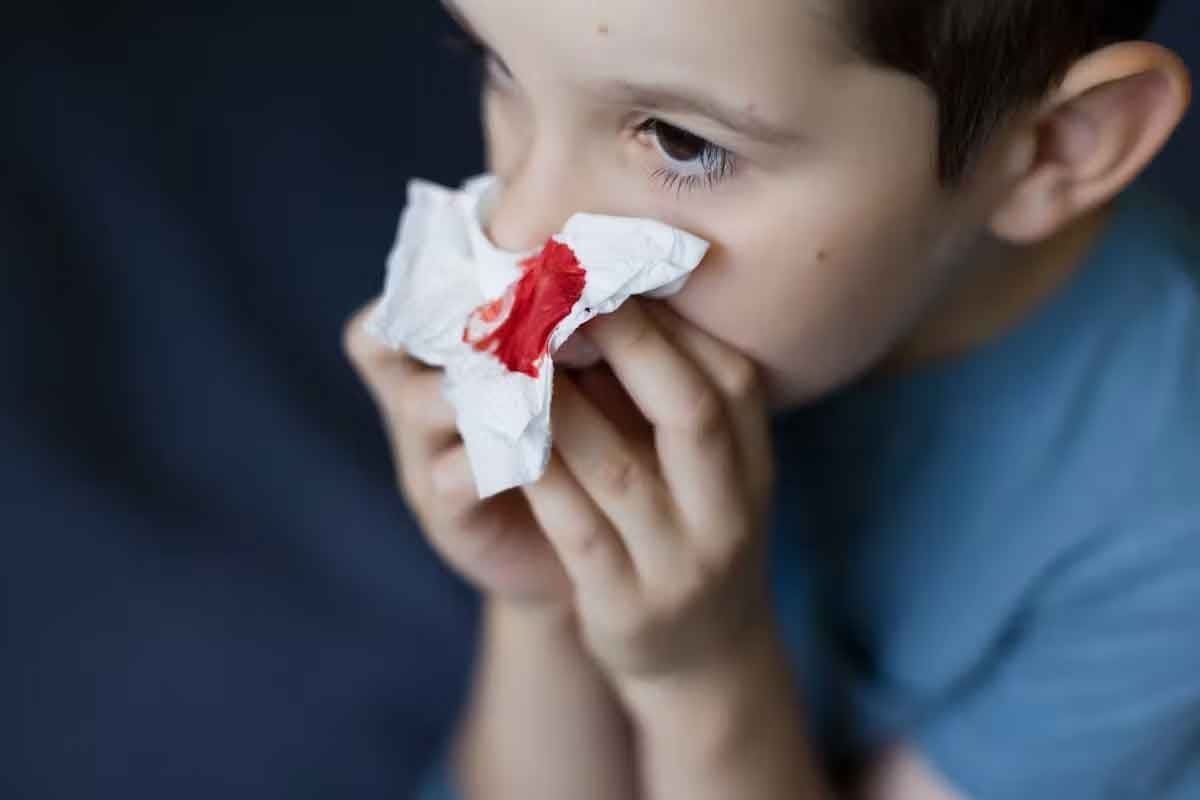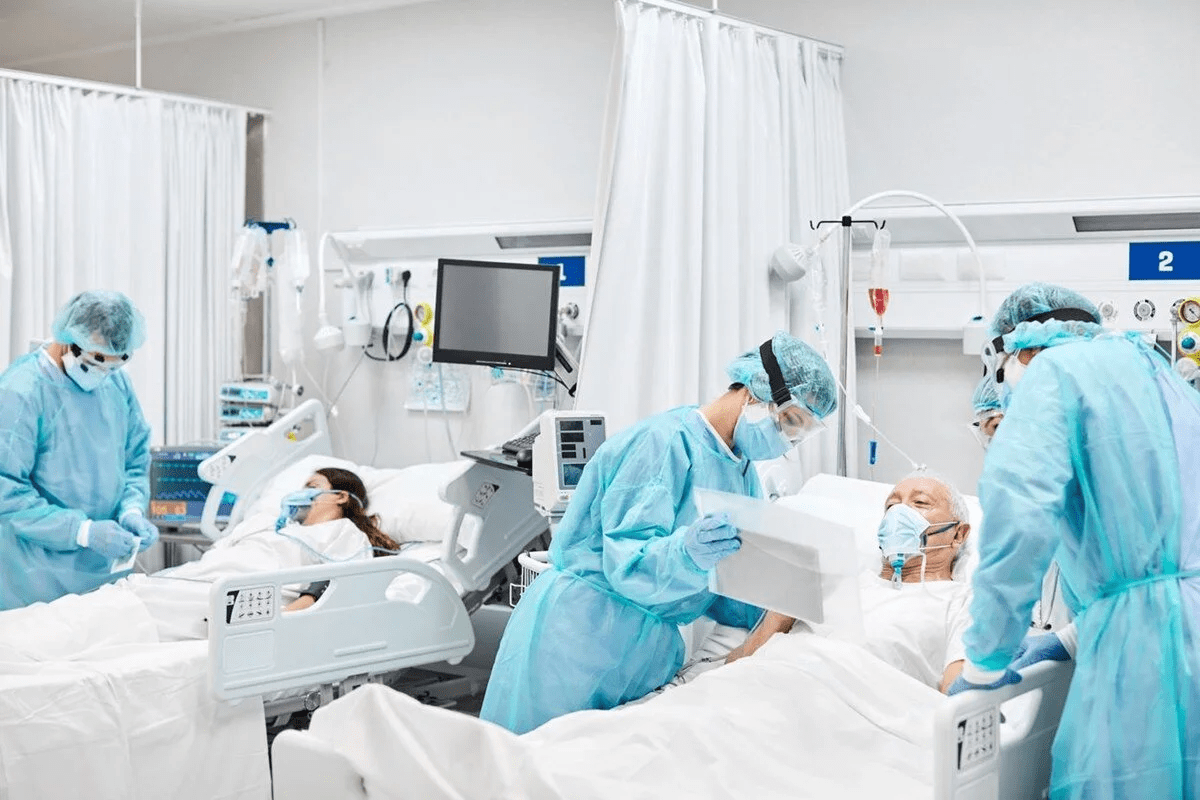Last Updated on November 26, 2025 by Bilal Hasdemir
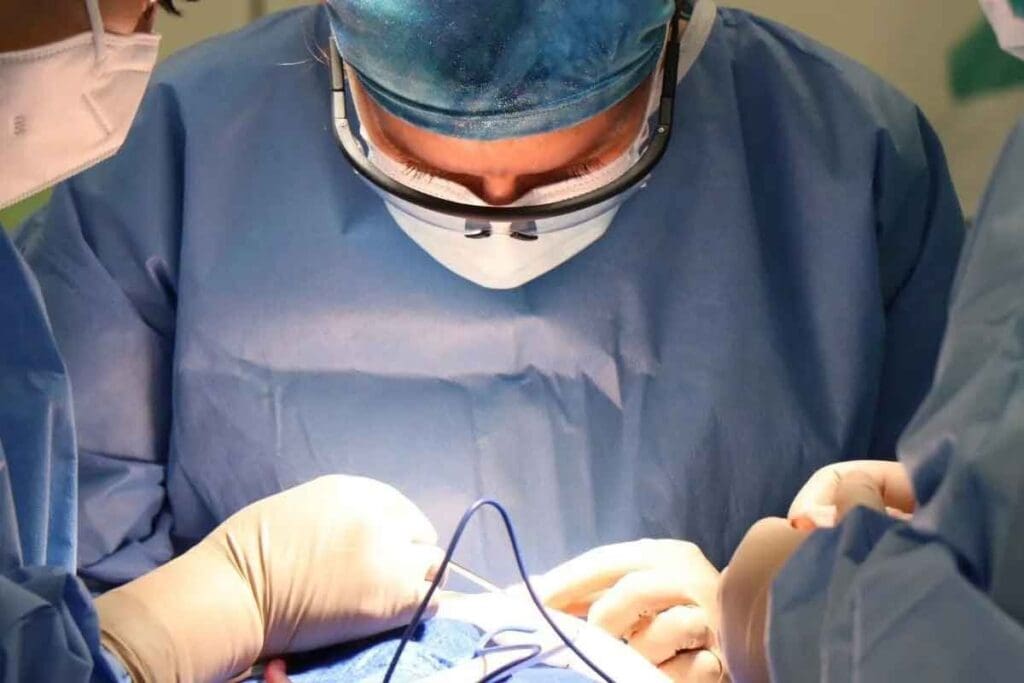
Aorta graft surgery is a lifesaving procedure for treating complex aortic diseases, like aneurysms and dissections. The use of Dacron tube grafts has changed the field of aortic repair. It offers a durable and reliable solution.
This surgery needs precision and expertise. It involves replacing damaged aortic tissue with a synthetic graft. The success of aorta graft surgery depends on the surgeon’s skill and post-operative care.
Key Takeaways
- Aorta graft surgery is key for treating aortic aneurysms and dissections.
- Dacron tube grafts are often used in aortic repair procedures.
- The success of aortic graft surgery relies on surgical skill and post-operative care.
- Patients need careful monitoring and follow-up after surgery.
- Aortic graft surgery greatly impacts patient outcomes and quality of life.
Understanding Aortic Pathologies and Surgical Indications
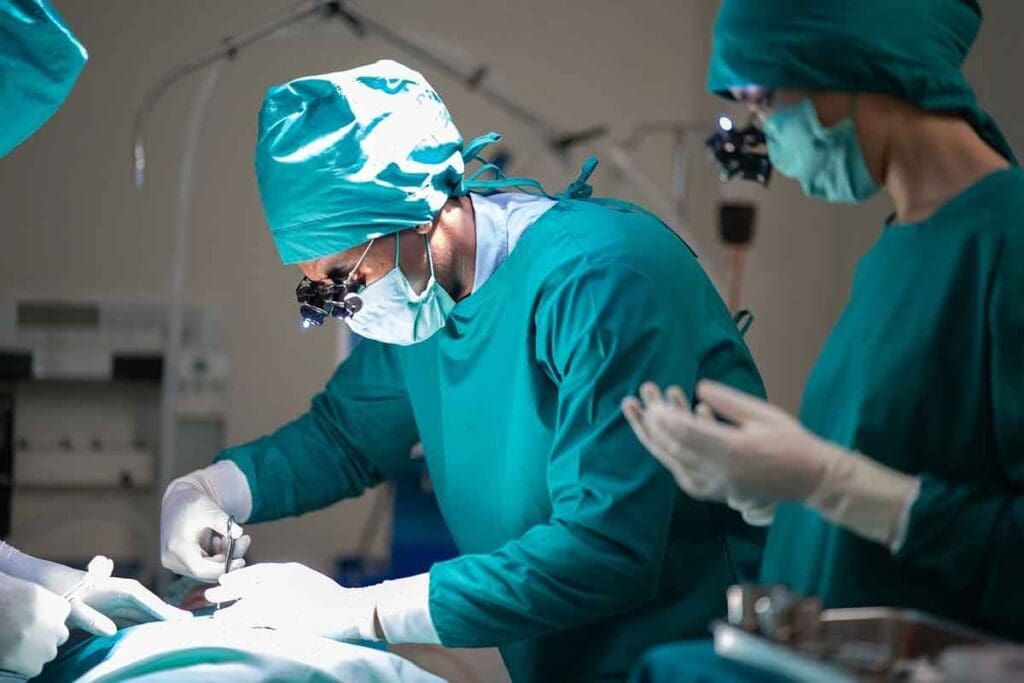
Aortic pathologies, like aneurysms and dissections, need a deep understanding of their causes and signs. The aorta, our main artery, can get sick and sometimes needs surgery. Aortic root surgery is a key treatment that needs accurate diagnosis and quick decisions.
Common Aortic Diseases Requiring Surgical Intervention
Aortic aneurysms and dissections are common diseases that need surgery. An aortic aneurysm is when the aorta gets too big and might burst. Aortic dissections are tears in the aorta’s inner layer, which can be deadly.
Some aneurysms near the aortic root are linked to Marfan syndrome. Other causes include heart problems like an irregular valve. Knowing the cause helps doctors choose the right surgery.
Diagnostic Criteria and Timing of Intervention
Doctors use imaging and clinical checks to diagnose aortic diseases. Imaging modalities like CT angiography and MRI help see how big and serious the problem is. The sooner the surgery, the better, for big or unstable aneurysms.
Risk Assessment and Patient Selection
Risk assessment is key in choosing who should have aortic surgery. Doctors look at the patient’s health, other health issues, and the aortic problem’s details. Cardiac assessment is also vital, as surgery can affect the heart.
By carefully looking at these factors, doctors can decide when to operate and who will benefit most from surgery.
Preoperative Planning and Patient Preparation
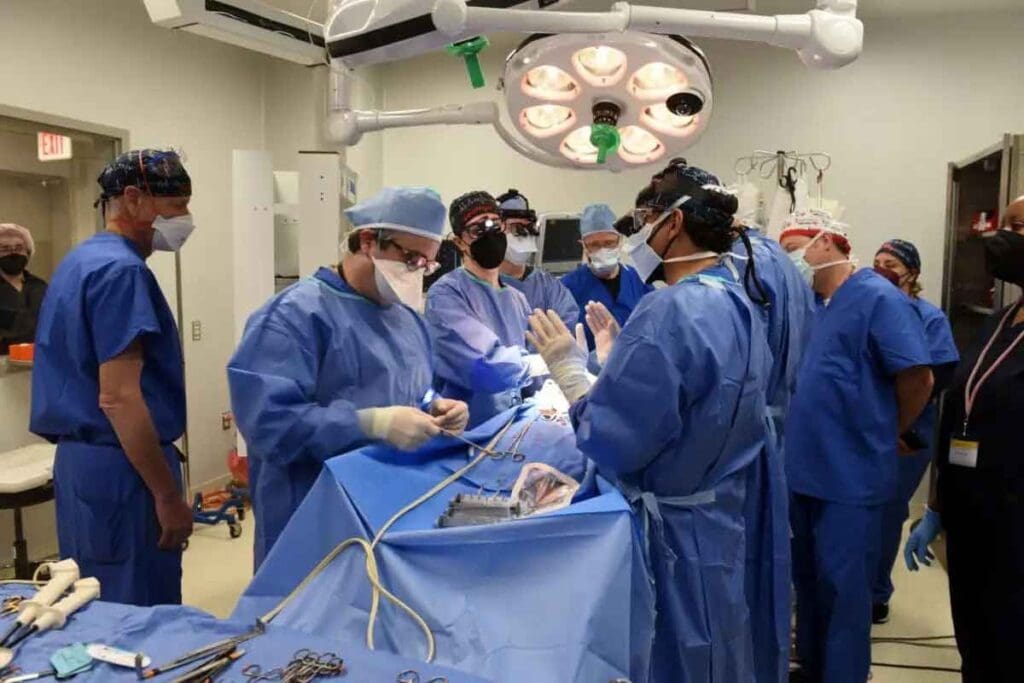
The success of aorta graft surgery depends a lot on preoperative planning and patient preparation. This stage is key to keeping patients safe and improving surgery results.
Comprehensive Imaging Studies
Imaging studies are very important to check the aorta and nearby areas. CT angiography and MRI give detailed views of the aorta’s size and the heart valve. A top cardiovascular surgeon says, “Good imaging is key for aorta surgery success, helping plan better and avoid problems.”
These studies spot possible risks and help the team plan a special plan for each patient.
Laboratory Evaluations and Cardiac Assessment
Lab tests and heart checks are key to see how well the patient is and how the heart works. Echocardiography and cardiac catheterization give important heart health info. This helps find any surgery risks.
A top doctor says, “A detailed heart check is vital for aorta graft surgery. It helps make the heart work better and lowers surgery risks.”
Anesthesia Considerations
Thinking about anesthesia is a big part of planning. The anesthesiologist looks at the patient’s health history, current health, and anesthesia risks. They check the airway, heart health, and past anesthesia reactions.
- Evaluate patient’s medical history
- Assess current health status
- Identify any risks with anesthesia
Patient Counseling and Informed Consent
Talking to patients and getting their consent is very important before surgery. Patients need to know the surgery’s risks, benefits, and other options. They should understand possible problems, what to expect, and post-surgery care.
“Getting consent is not just a legal thing; it’s about caring for the patient. It lets them make smart choices about their treatment,” says a patient care expert.
Good counseling lowers anxiety, makes patients happier, and prepares them for after surgery.
Essential Surgical Equipment and Materials
The right surgical tools are key for aorta graft surgery. This surgery is complex and needs top-notch materials and instruments.
Dacron Grafts: Types and Selection Criteria
Dacron grafts are vital in aorta graft surgery. They are made from strong polyester to handle artery pressure and stop vessel rupture. Choosing the right Dacron graft depends on the aorta size, aneurysm or dissection location, and the patient’s health.
Types of Dacron Grafts:
- Woven Dacron grafts
- Knitted Dacron grafts
- Gelatin-sealed Dacron grafts
- Collagen-coated Dacron grafts
| Graft Type | Description | Advantages |
| Woven Dacron | Tightly woven fabric | Low porosity, minimal bleeding |
| Knitted Dacron | More flexible than woven | Easier to handle, better compliance |
Specialized Instruments for Aortic Surgery
Aortic surgery needs special tools for precise work. These tools help avoid damage to the aorta and nearby areas.
Cardiopulmonary Bypass Equipment
Cardiopulmonary bypass (CPB) equipment is vital for aortic surgery. It keeps blood flowing and oxygen levels up during surgery. This lets surgeons work on a stopped heart, lowering risks.
The CPB circuit has important parts:
- Oxygenator
- Pump
- Heat exchanger
- Cardiotomy reservoir
Key Considerations for CPB:
- Adequate anticoagulation
- Precise temperature control
- Effective venting of the heart
Anesthesia Management for Aorta Graft Surgery
Aorta graft surgery needs careful anesthesia management for safety and best results. Good anesthesia care includes planning, monitoring, and quick actions.
Induction and Maintenance Protocols
Starting anesthesia for aorta graft surgery is key. Careful choice of anesthetic agents helps keep blood pressure stable. Agents that don’t harm the heart are best.
For keeping pain and anesthesia levels right, a mix of anesthetics and pain relievers is used.
- Narcotics like fentanyl help with pain
- Inhalational agents such as sevoflurane keep anesthesia steady
- Muscle relaxants help with surgery access
Hemodynamic Monitoring
Keeping an eye on blood pressure and heart function is vital. Methods include:
- Invasive arterial pressure monitoring via bilateral radial arterial lines
- Central venous pressure monitoring
- Transesophageal echocardiography (TEE) for heart function checks
Temperature Management Strategies
Keeping warm is key to avoid hypothermia. Ways to do this include:
- Warming blankets and heated humidifiers
- Constant core temperature checks
- Keeping the operating room warm
Pharmacological Support During Surgery
Medicine is key to manage blood pressure and heart function. Common medicines are:
- Vasopressors like norepinephrine for blood pressure support
- Inotropes such as dobutamine for heart strength
- Vasodilators for high blood pressure
Good anesthesia for aorta graft surgery means using all these steps together. This includes starting and keeping anesthesia, watching blood pressure and temperature, and using medicines. It all helps make sure patients do well.
Step-by-Step Approach to Aorta Graft Surgery
Aorta graft surgery needs a detailed step-by-step plan for the best results. This complex surgery has many important stages. Each stage requires careful attention and a deep understanding of the surgical methods.
Patient Positioning and Surgical Access
Getting the patient in the right position is key for a successful surgery. The patient lies on their back with their arms by their sides. The team makes sure the patient is ready and covered to keep the area clean.
The surgery starts with a median sternotomy. This method gives great access to the aorta. It’s important to handle tissues carefully and control bleeding well to avoid problems.
Establishing Cardiopulmonary Bypass
Setting up cardiopulmonary bypass (CPB) is a vital step. CPB stops the heart and moves blood away, making the area clear for surgery. The team primes the CPB circuit and gives the patient heparin to stop blood from clotting.
The team puts the CPB cannulae in the aorta and right atrium. They start the CPB machine. They watch the patient’s heart and blood flow closely and adjust as needed.
Aortic Resection Techniques
Removing the bad part of the aorta is called aortic resection. The team clamps the aorta above and below the bad part. They then cut the aorta and remove the bad section. They prepare the aorta for the new graft.
Graft Sizing and Preparation
Finding the right size for the graft is very important. The graft must fit perfectly to avoid problems. The team uses images and measurements to size the graft. They then cut and prepare the Dacron graft for the surgery.
| Step | Description | Key Considerations |
| Patient Positioning | Supine position with arms secured | Sterile access to the chest |
| Cardiopulmonary Bypass | CPB cannulae insertion and initiation | Heparinization, hemodynamic monitoring |
| Aortic Resection | Cross-clamping and transection of the aorta | Careful tissue handling, hemostasis |
| Graft Sizing and Preparation | Sizing and cutting the Dacron graft | Proper fit, beveling for anastomosis |
Specific Techniques for Different Aortic Segments
The way surgeons fix the aorta changes based on where the problem is. The aorta can be affected from top to bottom, each needing its own special approach.
Ascending Aortic Replacement
Replacing the ascending aorta is common for aneurysms or dissections. The surgery uses cardiopulmonary bypass and cardioplegic arrest to stop blood flow. The bad part is cut out and a Dacron graft is put in, with the coronary arteries reattached.
Aortic Arch Repair
Fixing the aortic arch is tricky because of the supra-aortic branches. Surgeons use selective antegrade cerebral perfusion or deep hypothermic circulatory arrest to keep the brain safe. The arch is replaced with a graft, and the branches are reattached.
Descending Thoracic Aorta Procedures
Fixing the descending thoracic aorta might need a thoracotomy or thoracoabdominal incision. To keep organs alive, left heart bypass or cardiopulmonary bypass might be used. The bad part is swapped with a graft.
Thoracoabdominal Aortic Repair
Repairing the thoracoabdominal aorta is very hard because of the disease’s extent and the visceral and renal arteries involved. The T-NEXT graft, a special Thoraflex prosthesis, helps manage complex aortic disease. The surgery includes reattaching visceral branches and using perfusion adjuncts to protect the spinal cord and organs.
Advanced Procedures in Aortic Surgery
Advanced aortic surgery has changed how we treat complex aortic problems. These new methods make treatments more precise and less invasive. This has greatly improved patient results.
Valve-Sparing Aortic Root Replacement
Valve-sparing aortic root replacement is a complex surgery. It replaces the aortic root with a graft but keeps the patient’s own valve. This is good for those with aortic root aneurysms who want to keep their natural valve.
Planning and doing this surgery carefully is key. Preoperative imaging helps figure out the right graft size. During surgery, the aortic root is dissected, and the graft is sewn in place. This way, the patient’s valve stays intact and works well.
Branched and Fenestrated Grafts
Branched and fenestrated grafts are special devices for complex aortic aneurysms. They are made to fit each patient’s anatomy. They have branches or fenestrations for the aortic branches, keeping blood flow to important organs.
These grafts have opened up new treatment options for thoracoabdominal aortic aneurysms. They need precise planning and imaging for accurate placement and a good seal.
Hybrid Techniques Combining Open and Endovascular Approaches
Hybrid techniques in aortic surgery mix open surgery with endovascular procedures. They use the best of both worlds for a more complete treatment plan.
For example, a hybrid surgery might fix the aortic root or arch with open surgery. Then, it uses endovascular stenting for the descending aorta. This mix can lower the risks of big open surgeries and lead to better results.
Minimally Invasive Aorta Graft Surgery Approaches
Minimally invasive techniques have changed aorta graft surgery for the better. They offer safer options than traditional open surgery. These new methods aim to reduce the harm from old surgical ways. This leads to faster recovery times and fewer complications.
Endovascular Aortic Repair (EVAR)
Endovascular Aortic Repair (EVAR) is a new way to treat aortic aneurysms. It uses small incisions in the groin to insert a stent-graft. The stent-graft is then guided to the aortic aneurysm site under imaging. It blocks blood flow to the aneurysm.
Thoracic Endovascular Aortic Repair (TEVAR)
Thoracic Endovascular Aortic Repair (TEVAR) is similar to EVAR but for the thoracic aorta. It treats thoracic aortic aneurysms and other issues. TEVAR uses a stent-graft in the thoracic aorta to block the diseased area from blood flow.
Mini-Thoracotomy Approaches
Mini-thoracotomy is a mix between traditional surgery and endovascular methods. It uses smaller chest incisions for aorta access. This method causes less tissue damage than a full thoracotomy.
Robot-Assisted Techniques
Robot-assisted techniques are the newest in aorta surgery. They use robotic systems for more precise surgery. Robot-assisted surgery allows for detailed repairs through small incisions. This can lead to faster recovery and better results.
| Technique | Description | Benefits |
| EVAR | Endovascular stent-graft placement for aortic aneurysms | Minimally invasive, reduced recovery time |
| TEVAR | Endovascular stent-graft placement for thoracic aortic pathologies | Less invasive than open surgery, effective for complex thoracic aortic diseases |
| Mini-Thoracotomy | Smaller incisions for aortic grafting | Less tissue trauma, quicker recovery |
| Robot-Assisted | Robotic-enhanced precision for aortic repairs | Enhanced precision, potentially improved outcomes |
Intraoperative Complications and Management
The success of aorta graft surgery depends on managing intraoperative complications well. These complications can happen even with careful planning and precise surgery.
Bleeding Control Strategies
Bleeding is a big risk during aorta graft surgery. It might need more surgery to stop. Effective bleeding control strategies are key to prevent bleeding and keep the patient stable.
A study in the Journal of Thoracic and Cardiovascular Surgery found bleeding is a big worry in aortic surgery. It affects how well the patient does and can be life-threatening.
“The key to managing bleeding is prompt recognition and intervention, utilizing a combination of surgical techniques and hemostatic agents.”
Managing Organ Malperfusion
Organ malperfusion is a serious problem during aorta graft surgery. It’s important to watch for signs and have plans to fix it.
- Continuous monitoring of organ function
- Adjusting surgical techniques to restore perfusion
- Utilizing adjuncts to support organ function
Addressing Technical Complications
Technical problems, like graft kinking or endoleak, can ruin the success of aorta graft surgery. Intraoperative imaging and careful graft sizing help avoid these issues.
| Complication | Prevention Strategy | Management Approach |
| Graft Kinking | Meticulous graft sizing and positioning | Revision of graft positioning |
| Endoleak | Intraoperative imaging and graft sizing | Additional stenting or graft revision |
Emergency Conversion Protocols
Sometimes, you might need to switch to a different surgery or use cardiopulmonary bypass. Having established emergency conversion protocols is essential for handling these situations well.
Experts say being ready for emergencies is key to a successful surgical team.
Postoperative Care and Monitoring
The time after aorta graft surgery is very important. Patients need careful care and watching. Good postoperative care helps avoid problems and helps patients recover well.
Immediate Recovery Phase Management
After surgery, patients go to the ICU for close watching. The immediate recovery phase checks vital signs like blood pressure and heart rate. Continuous monitoring helps spot problems early.
Hemodynamic Stabilization
Keeping blood pressure and heart function stable is key. Vasopressors and inotropes might be used to help. This ensures vital organs get enough blood.
Respiratory Support
Helping with breathing is also very important. Patients might need a ventilator to breathe. The aim is to keep oxygen levels right and avoid breathing problems.
Pain Management and Early Mobilization
Managing pain well is vital for comfort and moving early. A mix of medicines and other methods is used. Moving early helps avoid blood clots and speeds up recovery.
By focusing on these key areas of postoperative care, doctors can greatly improve outcomes after aorta graft surgery.
Conclusion
Aorta graft surgery is a key treatment for aortic aneurysms and dissections. It greatly improves patient results. Understanding aortic diseases and available surgeries helps doctors give the best care.
The success of this surgery depends on careful planning before the operation, precise surgery, and good care after. Aortic root surgery, for example, can extend the lives of those with aneurysms. This shows how vital this surgery is.
Cardiovascular surgery is always getting better. New techniques and technologies will make patient results even better. Healthcare teams need to keep up with these advances to offer top-notch care for complex surgeries.
FAQ
What is aorta graft surgery?
Aorta graft surgery is a complex procedure. It replaces a damaged part of the aorta with a synthetic graft. This graft is usually made of Dacron.
What are the indications for aorta graft surgery?
This surgery is needed for patients with serious aortic problems. These include aortic aneurysms and dissections. These issues can be life-threatening.
What is a Dacron graft?
A Dacron graft is a synthetic graft. It’s made from polyester fabric called Dacron. It’s used to fix damaged aorta parts.
How is the aorta accessed during graft surgery?
Surgeons access the aorta in different ways. They might use median sternotomy, thoracotomy, or laparotomy. This depends on the aortic problem’s location and size.
What is cardiopulmonary bypass, and how is it used in aorta graft surgery?
Cardiopulmonary bypass is a technique. It diverts blood flow away from the heart and lungs. This makes it easier for surgeons to work on the aorta.
What are the risks associated with aorta graft surgery?
Risks include bleeding, organ malperfusion, stroke, and death. These risks are lowered by careful patient selection and precise surgical techniques. Close monitoring after surgery is also key.
Can the aorta be replaced entirely?
It’s technically possible to replace large parts of the aorta. But, full replacement is not usually needed or possible. Most problems are in specific segments.
What is the difference between open and endovascular aorta graft surgery?
Open surgery involves a big incision. Endovascular surgery uses stenting and grafting through small incisions. It’s less invasive.
What is the role of imaging studies in preoperative planning for aorta graft surgery?
Imaging studies like CT angiography and MRI are vital. They help surgeons understand the problem’s extent. They also plan the surgery and identify risks.
How is pain managed after aorta graft surgery?
Pain management includes medicine and non-medicine methods. This includes epidural analgesia and early movement. It helps reduce pain.
What is ascending aortic replacement?
Ascending aortic replacement is a surgery. It replaces the ascending aorta with a Dacron graft. This treats aneurysms or dissections in this area.
What is thoracoabdominal aortic repair?
Thoracoabdominal aortic repair is a complex surgery. It repairs or replaces the thoracoabdominal aorta. It uses both open and endovascular techniques.
What is aortic resection?
Aortic resection is a surgery. It removes a diseased or damaged aorta part. Then, a graft is used to fix the aorta.
Can aorta graft surgery be performed using minimally invasive techniques?
Yes, some surgeries use minimally invasive methods. These include endovascular aortic repair (EVAR) and thoracic endovascular aortic repair (TEVAR).
References
- Puttini, I., Kapalla, M., Braune, A., Michler, E., Kröger, J., Lutz, B., … & Busch, A. (2024). Aortic Vascular Graft and Endograft Infection—Patient Outcome Cannot Be Determined Based on Pre-Operative Characteristics. Journal of Clinical Medicine, 13(1), 269. https://pmc.ncbi.nlm.nih.gov/articles/PMC10823419/



